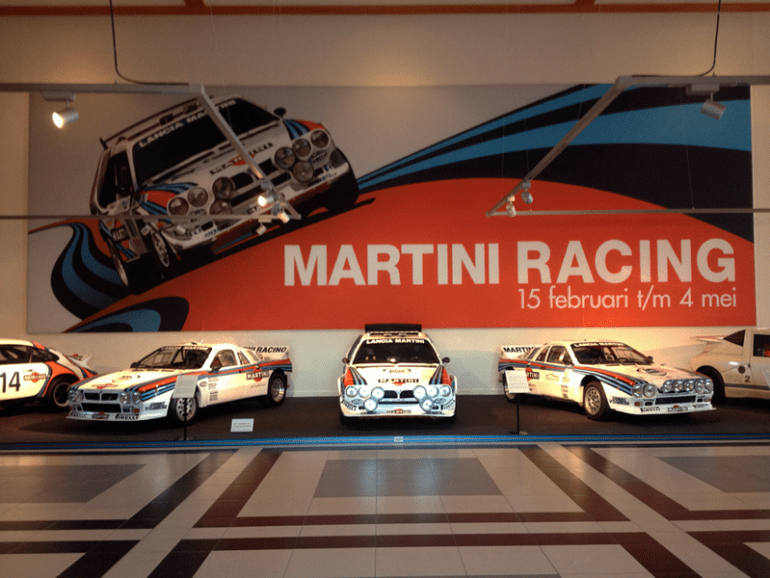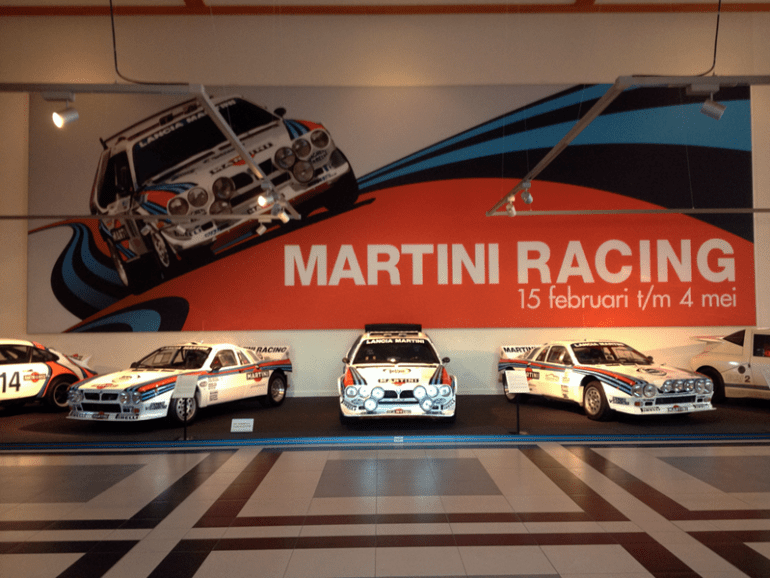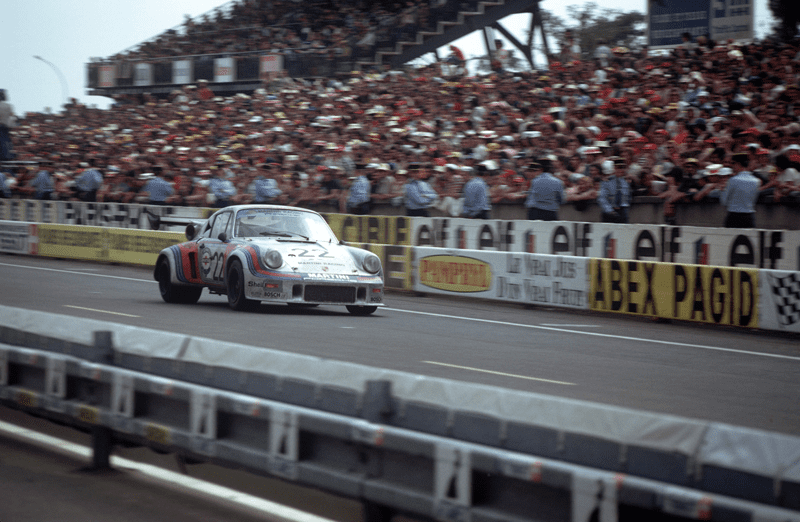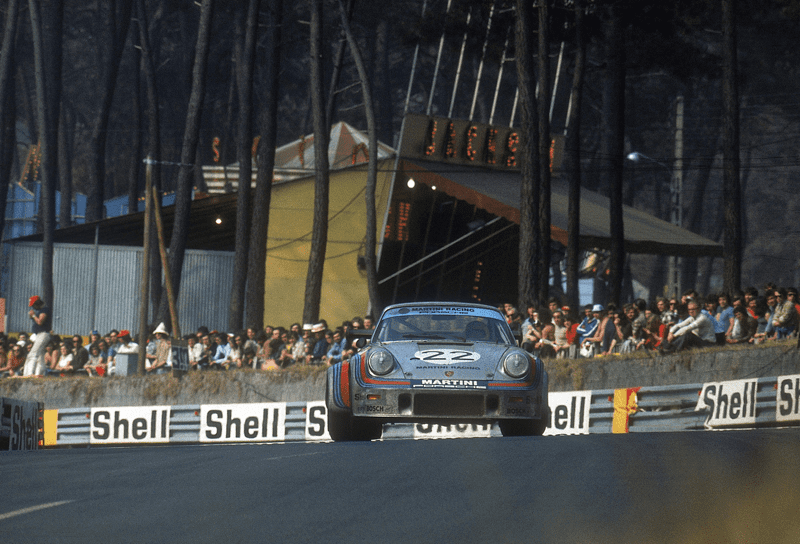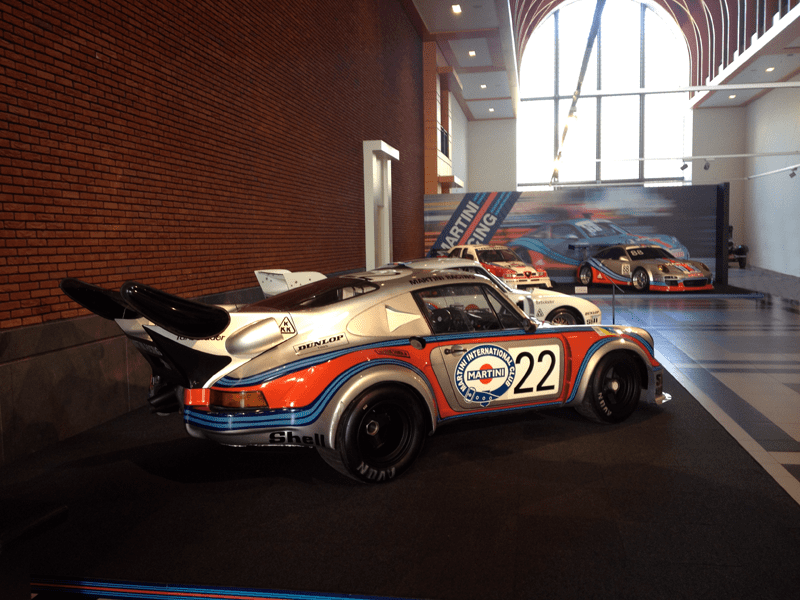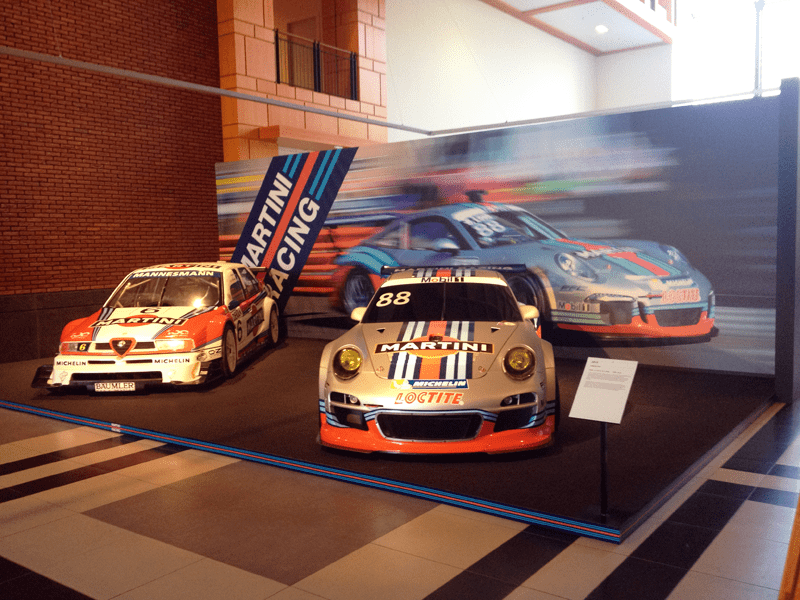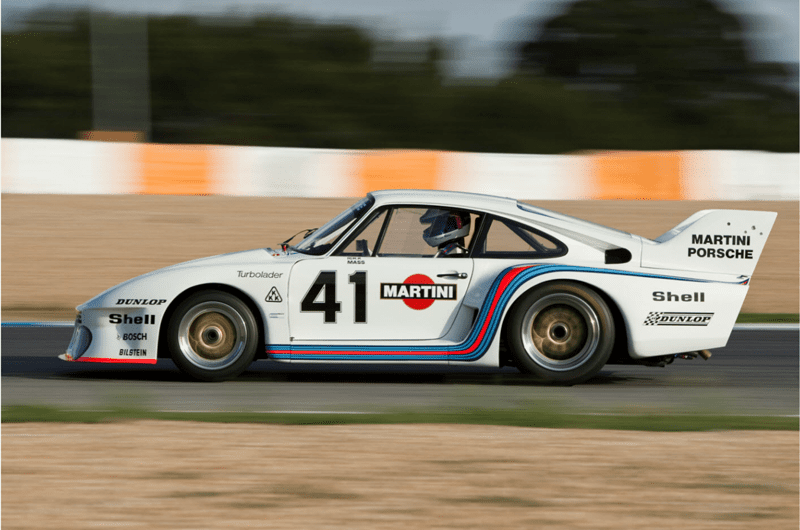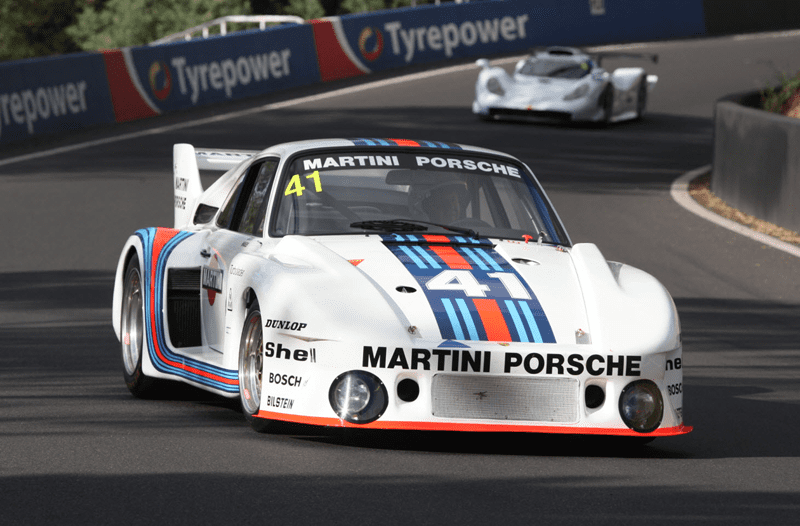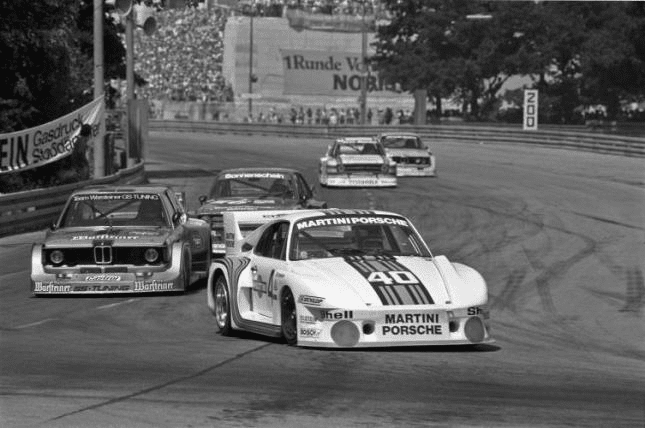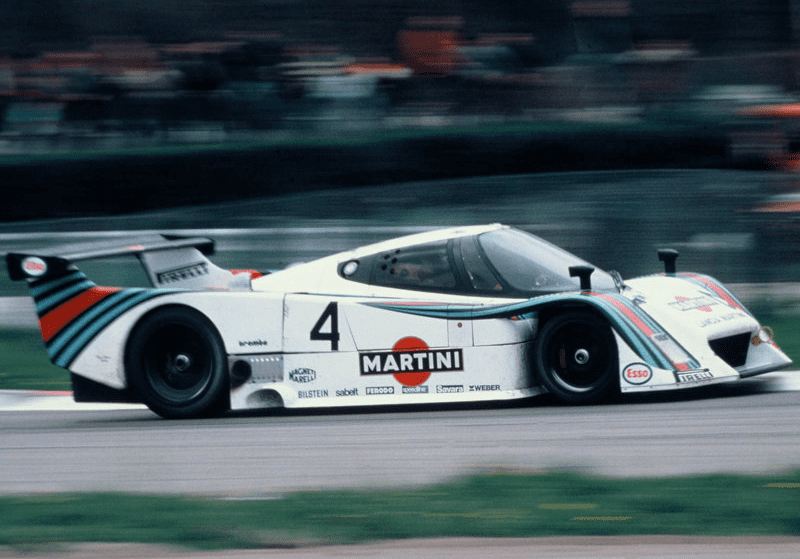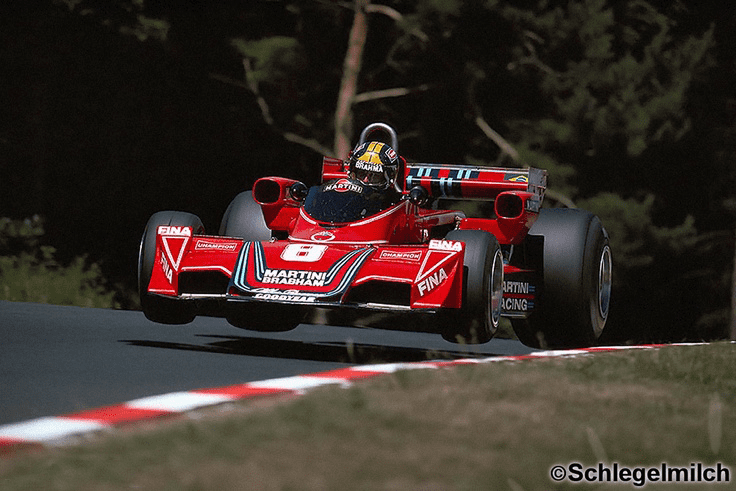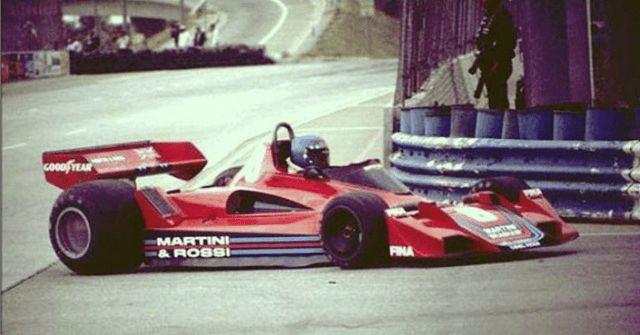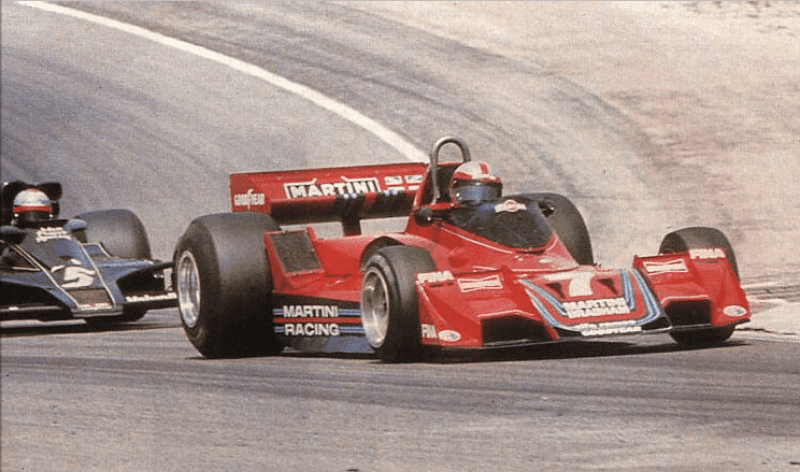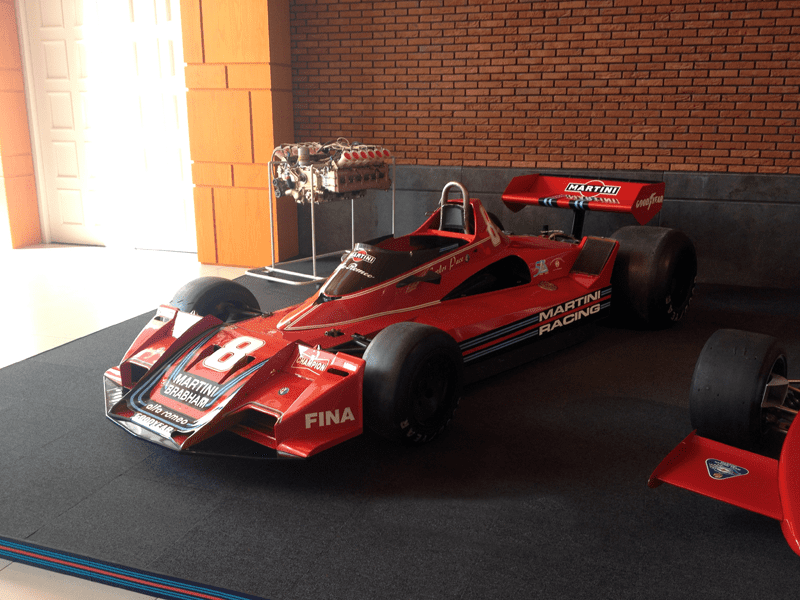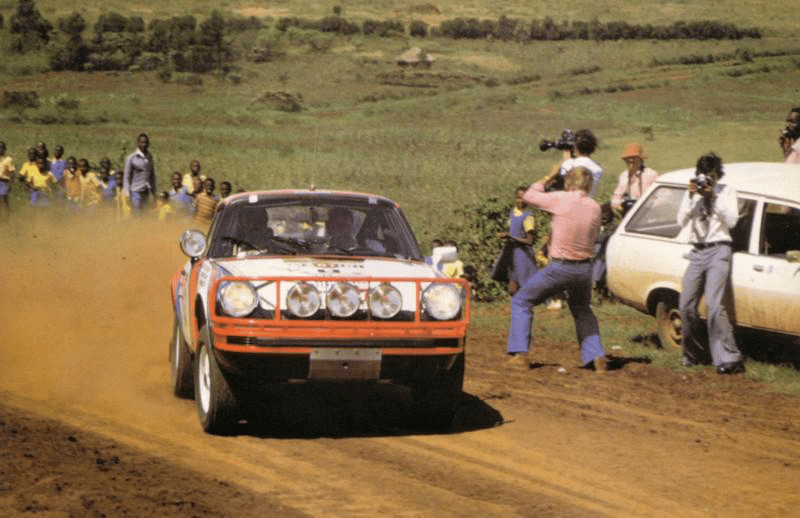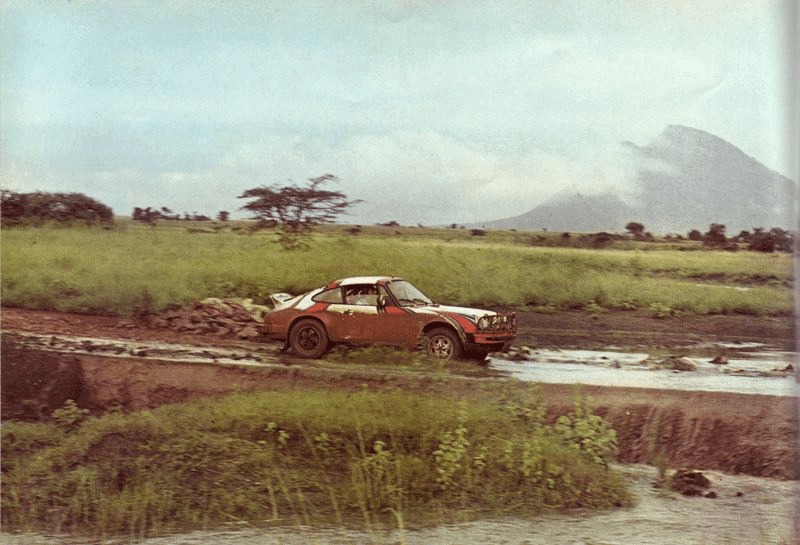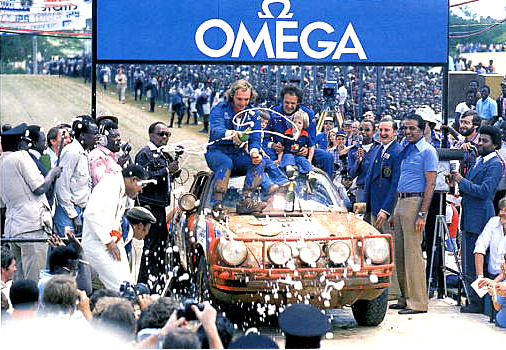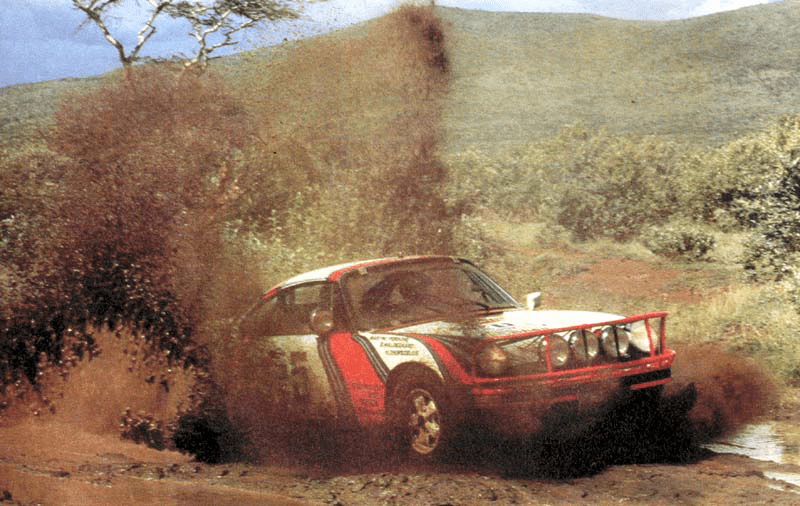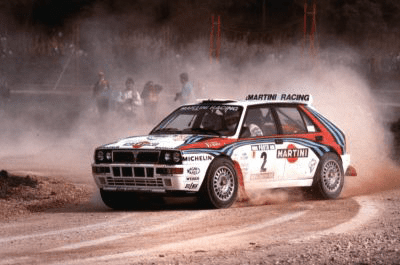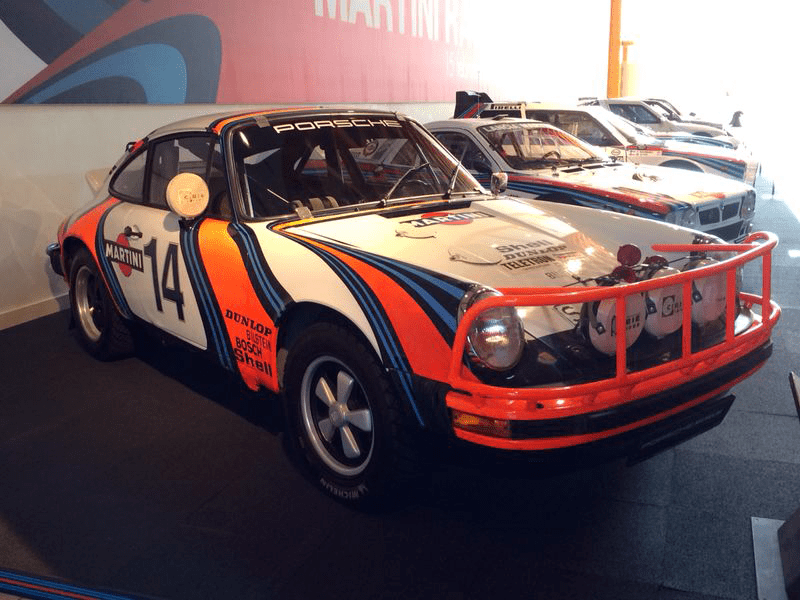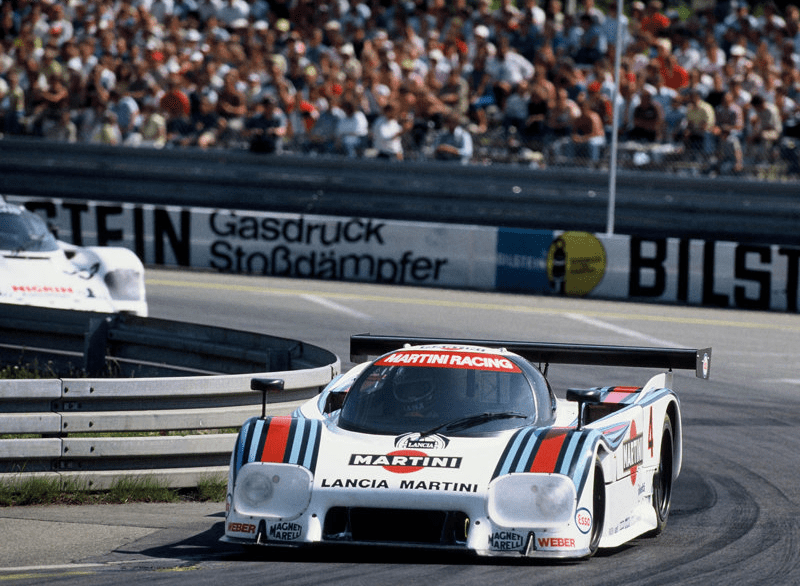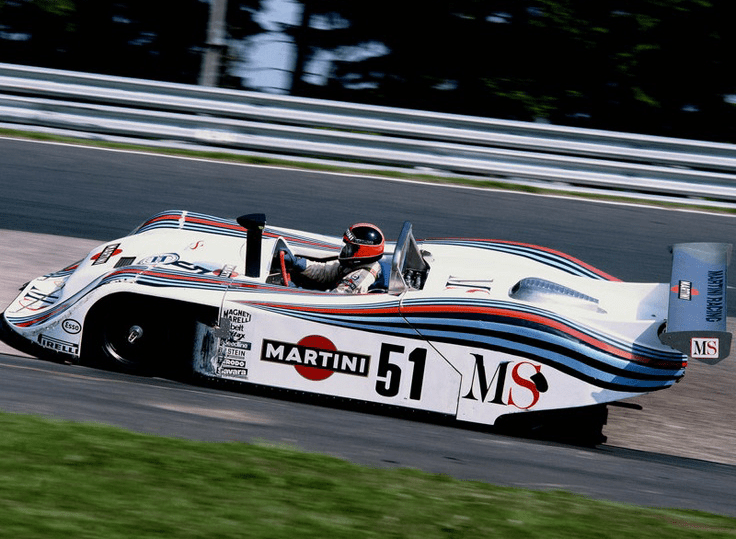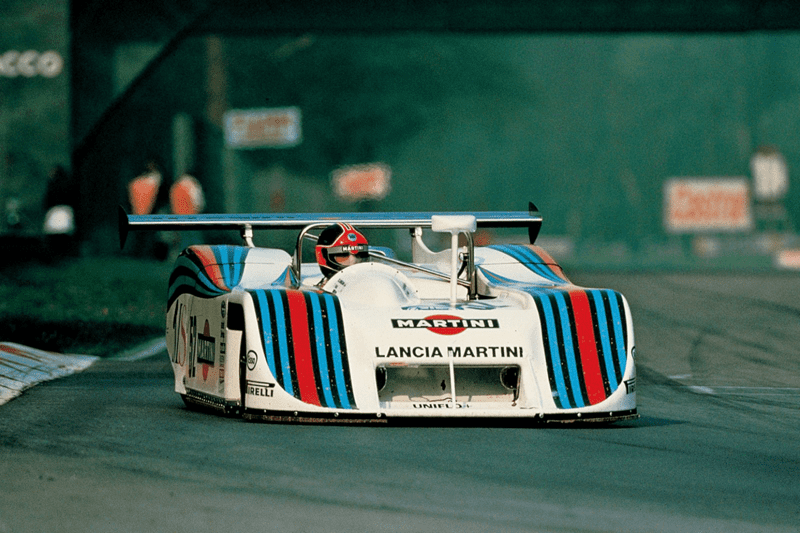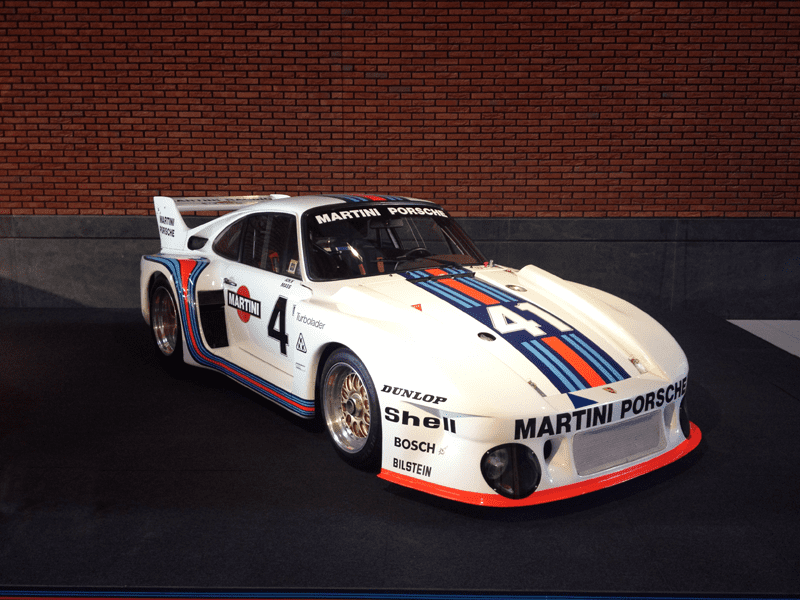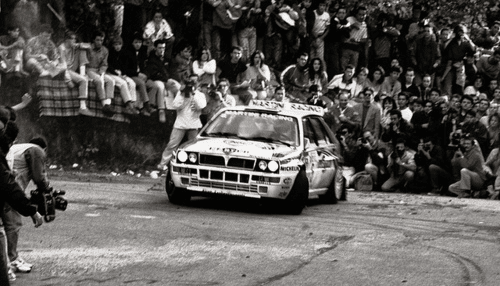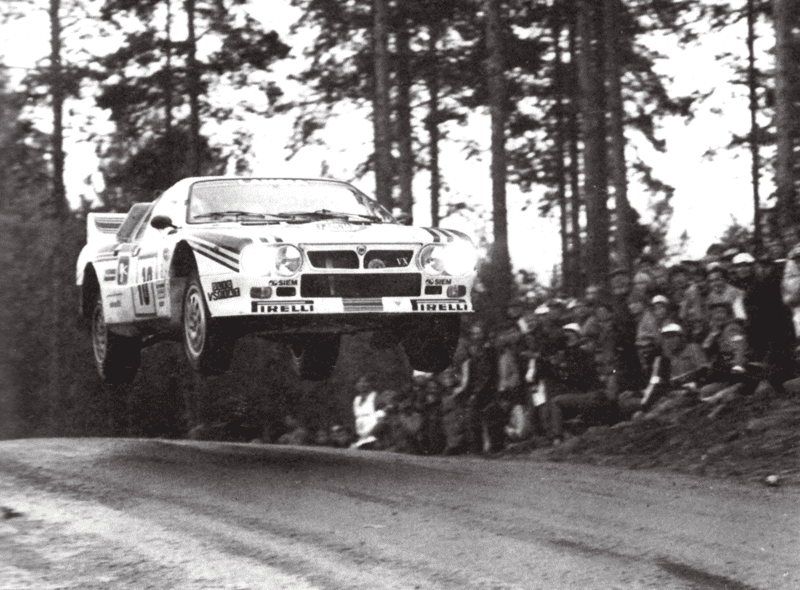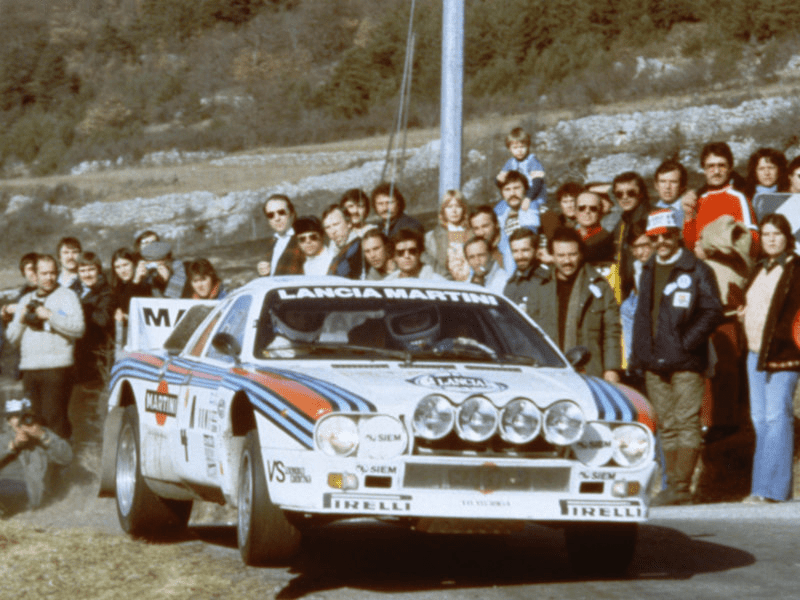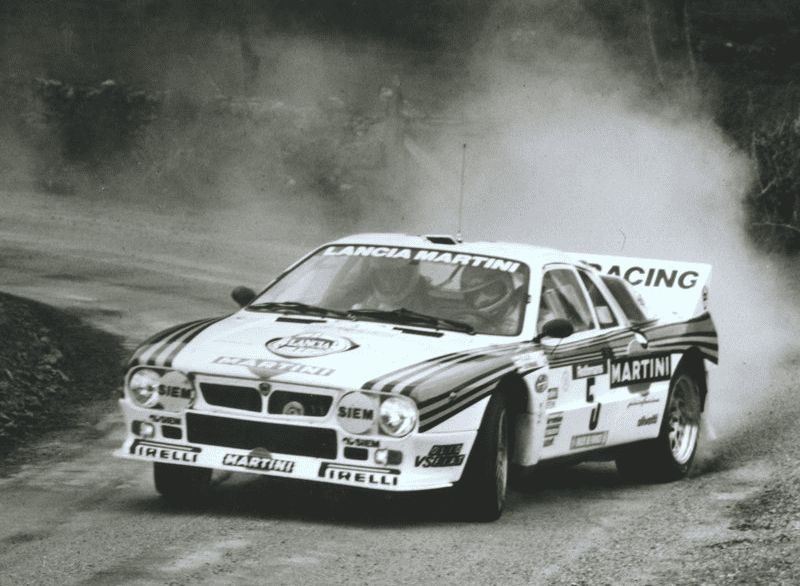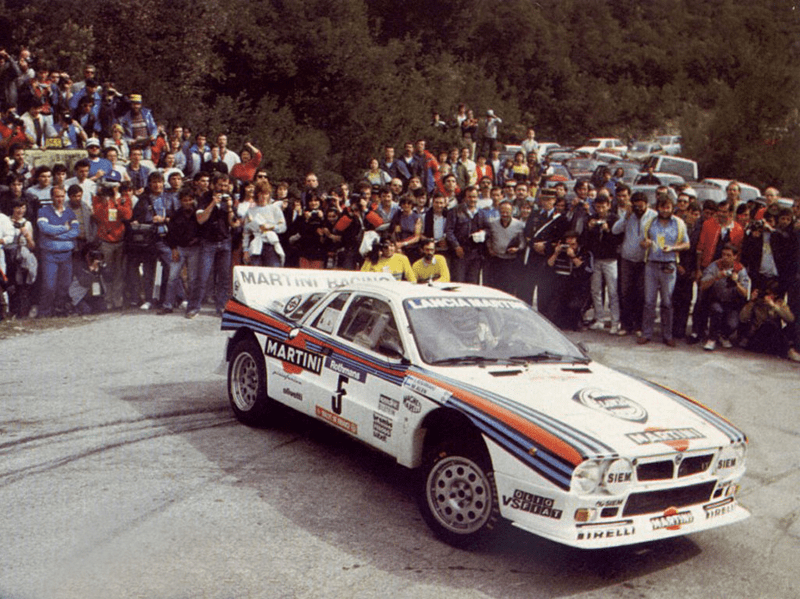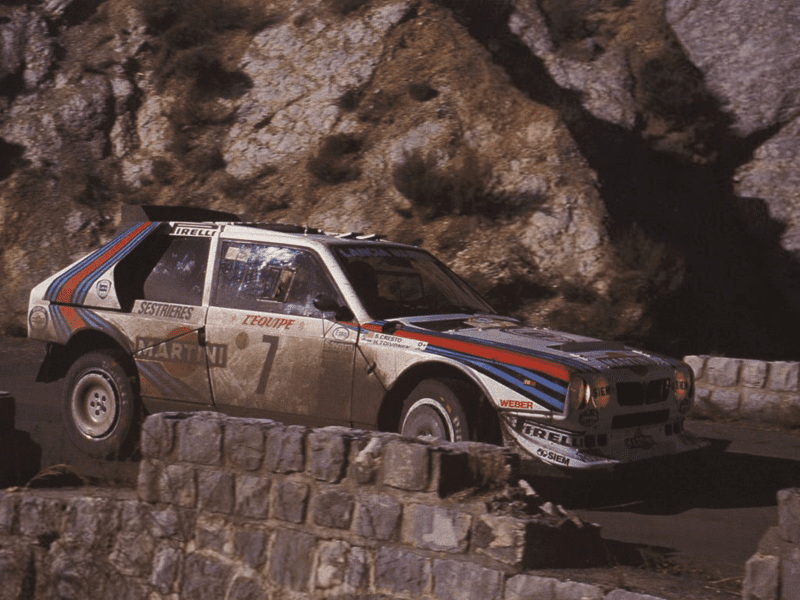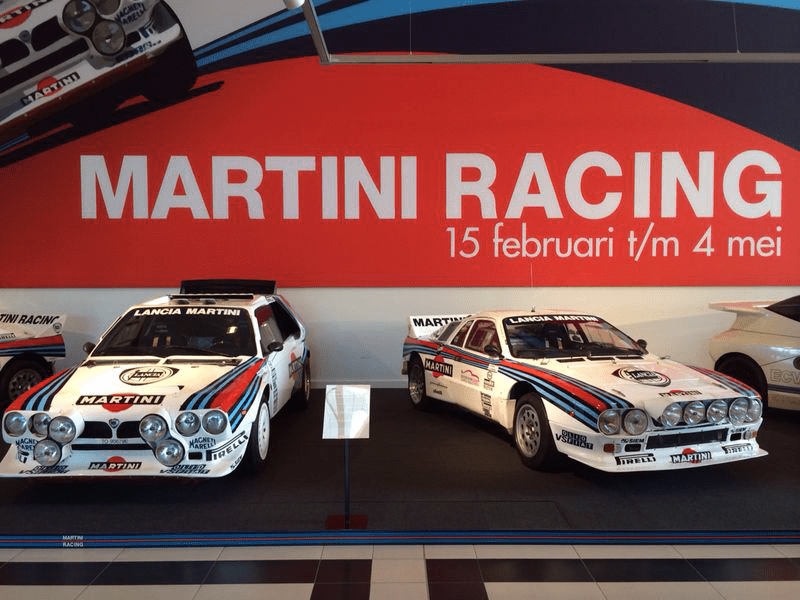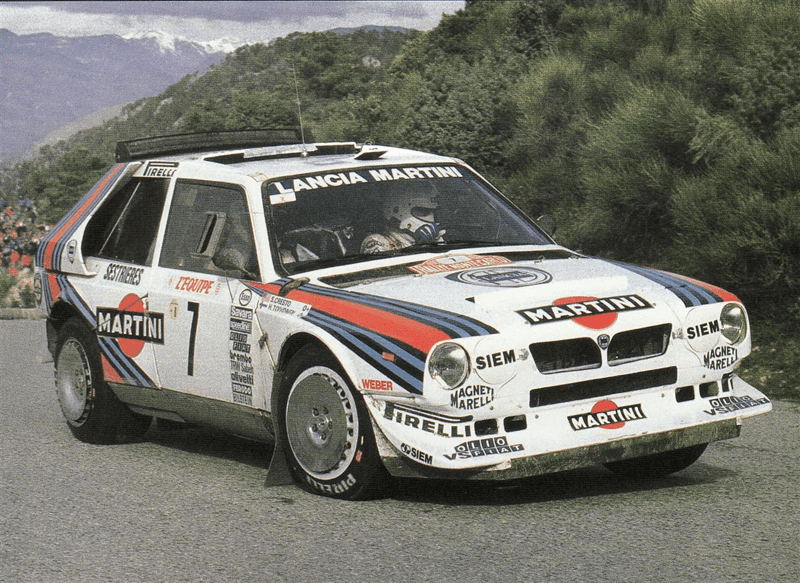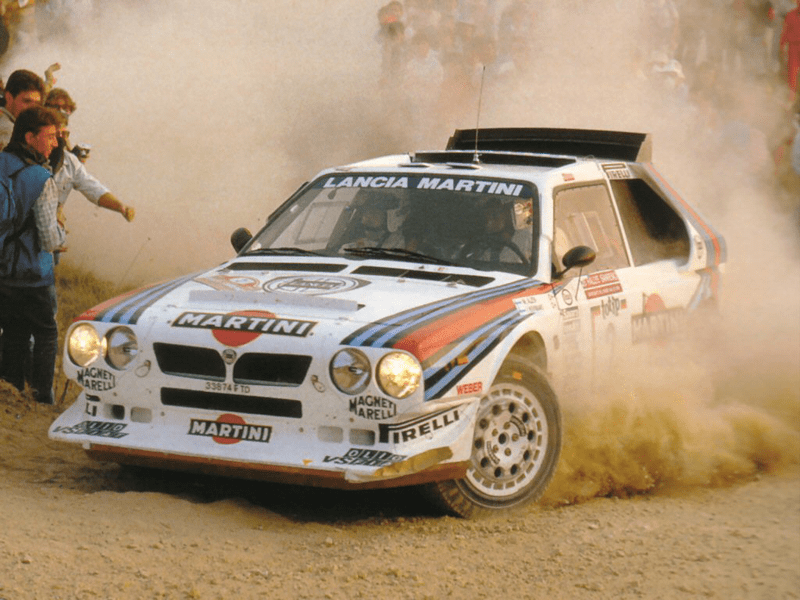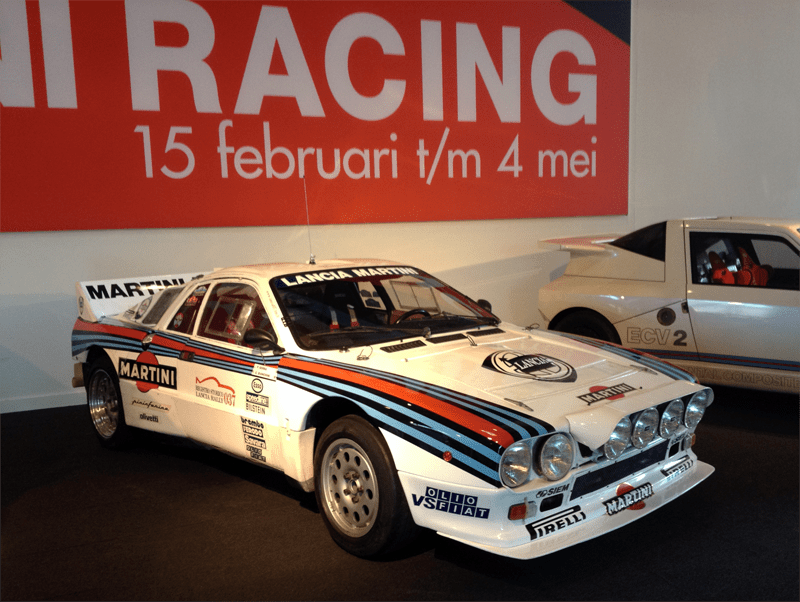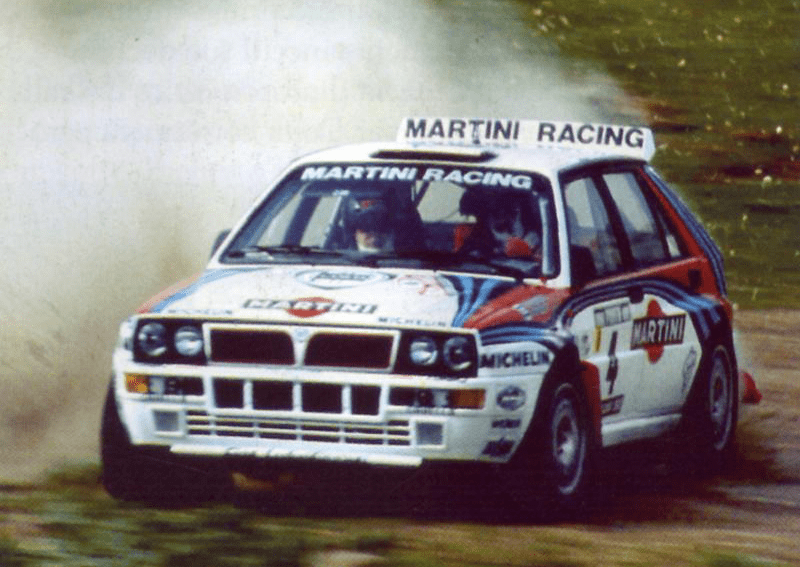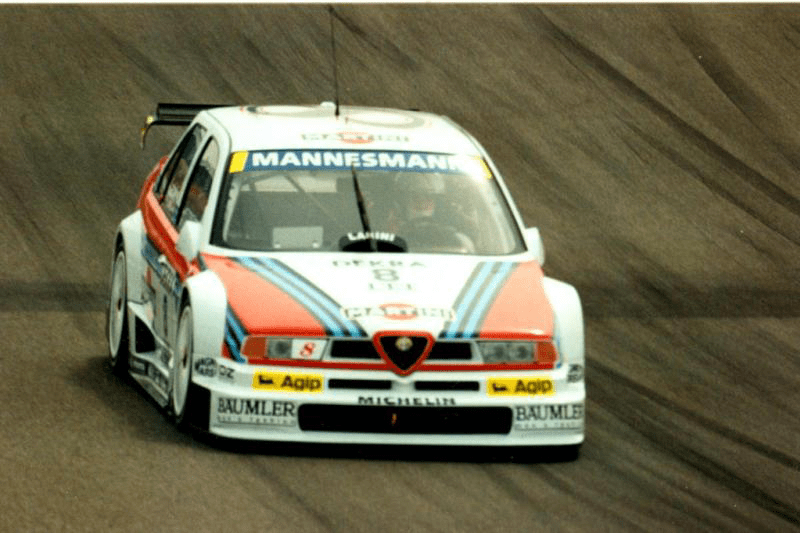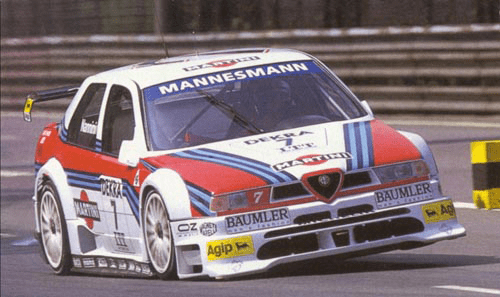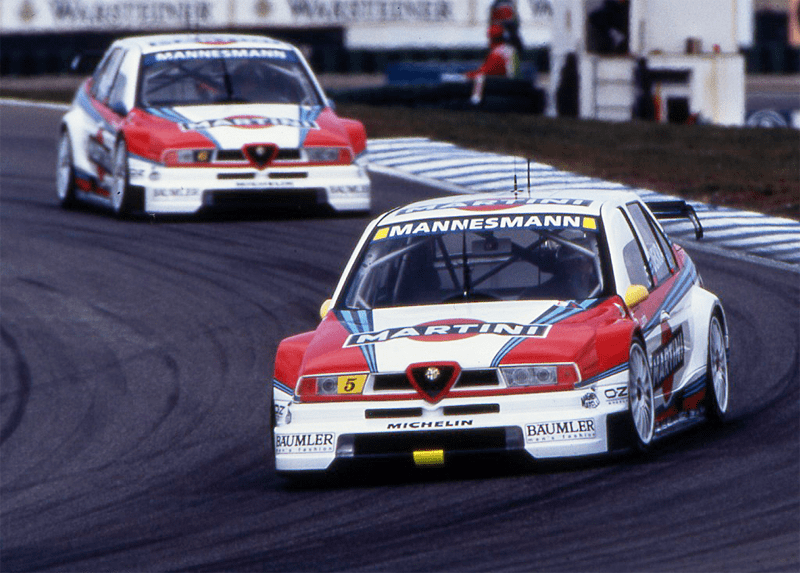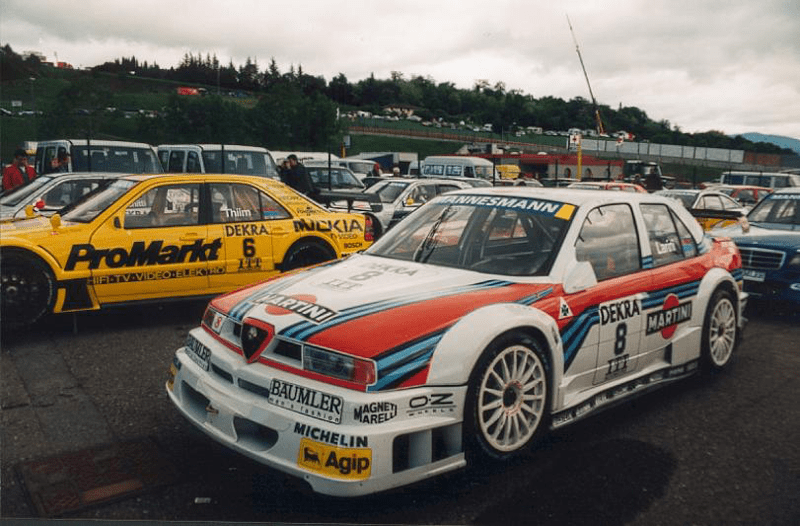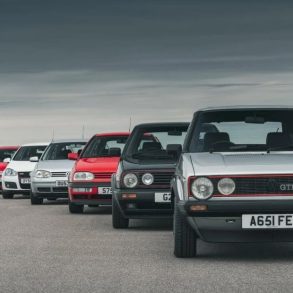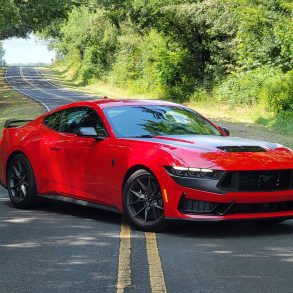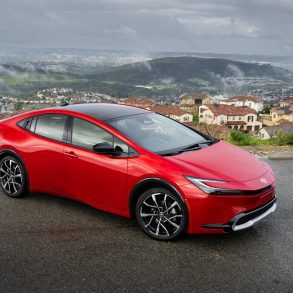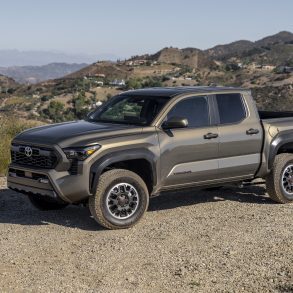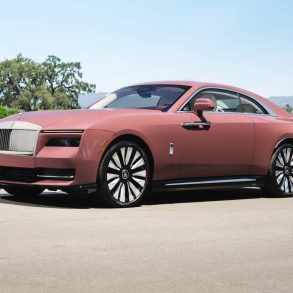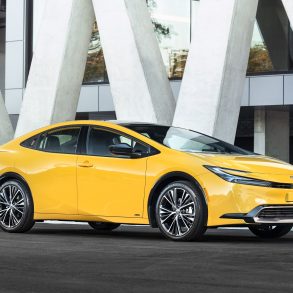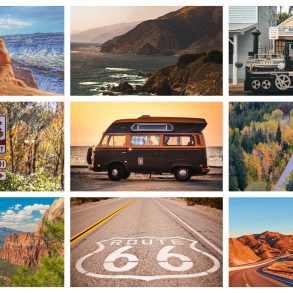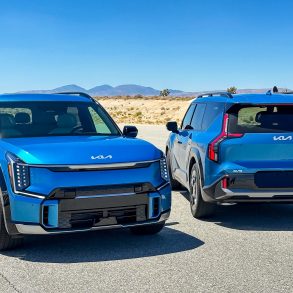If you have been a regular viewer or attendee at any kind of auto racing in the 1970s, ’80s and early ‘90s, there’s no way you’re not familiar with the Martini Racing Cars. A combination of dark blue, light blue and red stripes on a silver or white background are the iconic livery of one of the first major sponsors in auto racing, and these colors have made their mark on some of the most exciting and thrilling decades in racing history. Martini has been connected to auto sports for over 45 years, and during that period Martini Racing teams have dominated every important racing event. The success story includes victories at Le Mans, Formula 1, World Rally Championships and DTM. For the youngsters among my readers: as much as you can see Red Bull at every major extreme sports event these days, Martini was at every auto racing event back in the “old days”. At any auto racing event the Martini colors would be omnipresent and impossible to miss.
Until May 4th 2014, a small but significant piece of the Martini Racing history is brought together and is on display at the Louwman Museum in Den Haag (The Hague, Netherlands). Usually, you would have to travel to at least 4 different museums and even then you wouldn’t see all of these cars, as some are part of private collections. The cars in this temporary collection are combined into four main categories: Rally Cars, Touring Cars, Formula 1 Cars and Endurance Racing Cars.
Highlights include:
1974 Porsche RSR Turbo
In 1974, Porsche took their turbo charging program to the next level with the Carrera Turbo 2.14. A massive turbo was mated to its 2,14-liter engine, giving it more than 450 horsepower. Porsche built 3 RSR Turbo endurance cars for the 1974 season, of which the R13 was the most successful. It finished every race it competed in, and came in second overall at Le Mans. The car on display in the collection is unrestored and in its original Martini Racing livery. I’ve also included a few pictures of the same car in action, courtesy of Porsche AG.
1976 Porsche 935
This was Porsche’s entry in the Group 5 “silhouette” sports car championship, which allowed bodywork modifications, larger wings, wider axles and water cooling, provided that the basic silhouette of the car and engine block remained unchanged. Porsche engineers discovered a loophole in the rules regarding the modifications of fenders, which gave them the freedom to remove the headlights to reduce drag and create more downforce. The 935 won four of the seven races and the world championship. The 970 kg car had a 2,9-liter flat-6 turbo engine pumping out 590 horsepower.
1976 Brabham-Alfa Romeo Formula 1 racing car
The Brabham team, run by Bernie Ecclestone switched to an Alfa Romeo flat-12 sporst car engine, pumping out 520 horsepower. It was much more powerful than the outgoing Ford-Cosworth V8, but also heavy and unreliable. The engine had to be removed in order to change the spark plugs and the car had to be equipped with four separate fuel tanks to house 214 liters (56 US gallons) of fuel, because of the extreme fuel consumption. The team switched to a red background color for the Martini Racing colors.
1978 Porsche 911 SC Safari
Specifically designed to compete in the prestigious East African Safari Rally, this car is based on a standard 911 SC with a 3-liter 6-cylinder engine, which was tuned to 250 horsepower, and the cars were equipped with bull bars and lifted to a gound clearance of 28cm (11”). But the fantastic Martini livery is what really made the cars stand out.
1982 Lancia-Abarth LC1 Sport Spider and 1983 Lancia LC2
Lancia entered the new Group C prototype class with the open-roof LC1, which had been developed as a ‘group 6’ car. It was powered by a 1,4-liter four-cylinder turbo engine with no less than 450 horsepower! Yes, you read that right. Can you imagine what a technological masterpiece this must have been for those days? The car was able to reach a top speed of 350 km/h (219 mph) and won three races in 1982, before being replaced at the end of the year. The LC2 was a true Group C car, and it had almost double the engine: a 2,6-liter twin turbo V8 with 800 horsepower, which was more powerful than the numerous Porsche 956 it was competing against. Unfortunately, reliability issues and high fuel consumption meant it was unable to fight for the title. After 4 more years, Martini Racing quit the endurance racing series at the end of the 1986 season.
1983 Lancia 037 WRC
These silhouette racers, loosely based on the Lancia Montecarlo, marked Martini Racing’s return to the World Rally Championship, featuring rear-wheel drive in a time when Audi had just taken the title with its new Quattro four-wheel drive system. The Lancia was a spectacular car to watch, drifting and jumping its way through a rally stage. And the recipe of a light and easy-handling car with a 2-liter four-cylinder engine with compressor would prove successful, although it was the last rear-wheel drive car ever to win a WRC title.
1985 Lancia Delta S4 WRC
Lancia’s first four-wheel drive rally car, with a 1,8-liter four-cylinder twincharged (turbocharger and compressor) engine with 450 horsepower was virtually a Formula 1 car able to race on gravel. It was the title favorite for the 1985 World Rally Championship, until Henri Toivonen fatally crashed it in the Tour de Corse, which would change rallying for good as it marked the end of the famous Group B rally cars. (Left in the picture)
1992 Lancia Delta HF WRC
This is the final evolution of the greatest rally car in history, squeezing 365 horsepower from a 2-liter four-cylinder engine. No other car has ever been able to match its 6 consecutive WRC constructors championships from 1987-1992 and its record of 46 WRC wins has only been paralleled by the Subaru Impreza, more than a decade later. The Lancia Delta was the trademark vehicle of a thirteen-year long hugely successful collaboration between Lancia and Martini Racing.
1995 Alfa 155 V6 DTM
Martini Racing switched to touring car racing with Alfa Romeo from 1992 onwards, after decades of endurance racing, Formula 1 and world rallying. At first in the Italian Superturismo Championship, but from 1995 in the more prestigious German DTM (Deutsche Tourenwagen Meisterschaft), which was basically the world championship for touring car racing. The 480 horsepower Alfa 155 2,5-liter V6 cars won several races against heavy competition from dozens of Mercedes-Benz C-Class and Opel Calibra. (Left in the picture)
During the display of the Martini Collection, entrance to the museum with over 250 cars dating back from the 19th century, is included for the same price. It’s the world’s oldest private collection, created in 1934 and accumulated by two generations of the Louwman family and it’s widely considered as one of the world’s finest car collections.
P.S.
This last car reminds me of the end of the 1994 DTM season, when Alessandro Nannini with the Alfa Romeo 155 (the year before they were sponsored by Martini) still had a shot at the championship title in the last race of the year. After starting last, he was charging through the field already ahead of his main competitor Klaus Ludwig in his Mercedes-Benz. Nannini would have had a good chance of taking the title, until he was hit from behind by another Mercedes-Benz driver: Roland Ash. This ended the title chances for Nannini, but he was not going to let the German get away with it. The hot-blooded Italian stormed into the pits for a fresh set of tires and returned onto the track, looking for Ash. And looking for revenge. A must-see for everyone who used to watch these races back then. Check it out on Youtube: Choose from the full version with spectacular Dutch commentary by Olav Mol or the short version with Italian commentary and cheesy background music. Or both, just because it’s great to watch.
For more video shootage of some of these Martini Porsches, and other Porsche Le Mans racers, this 15-minute video is well worth your time:

